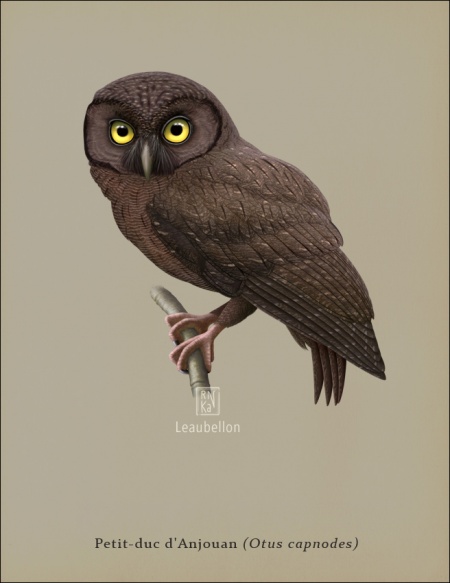
- Otus capnodes
Identification
20-22 cm (8-8½ in).
The body is barred, streaked and vermiculated
Two colour morphs:
- Dark: dark ashy-brown
- Light: pale reddish-brown with a black border to the pale grey facial disc
Distribution
Taxonomy
This is a monotypic species[1].
This species has previously been considered a subspecies of Otus rutilus.[2]
Habitat
Native upland primary forest, often on steep slopes and requires large trees with cavities for nesting and roosting. Usually at heights over 300 m.
Status
On the IUCN Red List as "Critically Endangered"[3]
Behaviour
Diet
There is very little information but it is believed they eat large insects.
References
- Clements, J. F., T. S. Schulenberg, M. J. Iliff, D. Roberson, T. A. Fredericks, B. L. Sullivan, and C. L. Wood. 2016. The eBird/Clements checklist of birds of the world: v2016, with updates to August 2016. Downloaded from http://www.birds.cornell.edu/clementschecklist/download/
- Avibase
- BirdLife International
- Handbook of the Birds of the World Alive (retrieved December 2016)
Recommended Citation
- BirdForum Opus contributors. (2025) Anjouan Scops Owl. In: BirdForum, the forum for wild birds and birding. Retrieved 17 May 2025 from https://www.birdforum.net/opus/Anjouan_Scops_Owl
External Links
The following link will search the gallery for images of this species, however, none were found at the time of editing.
GSearch checked for 2020 platform.



